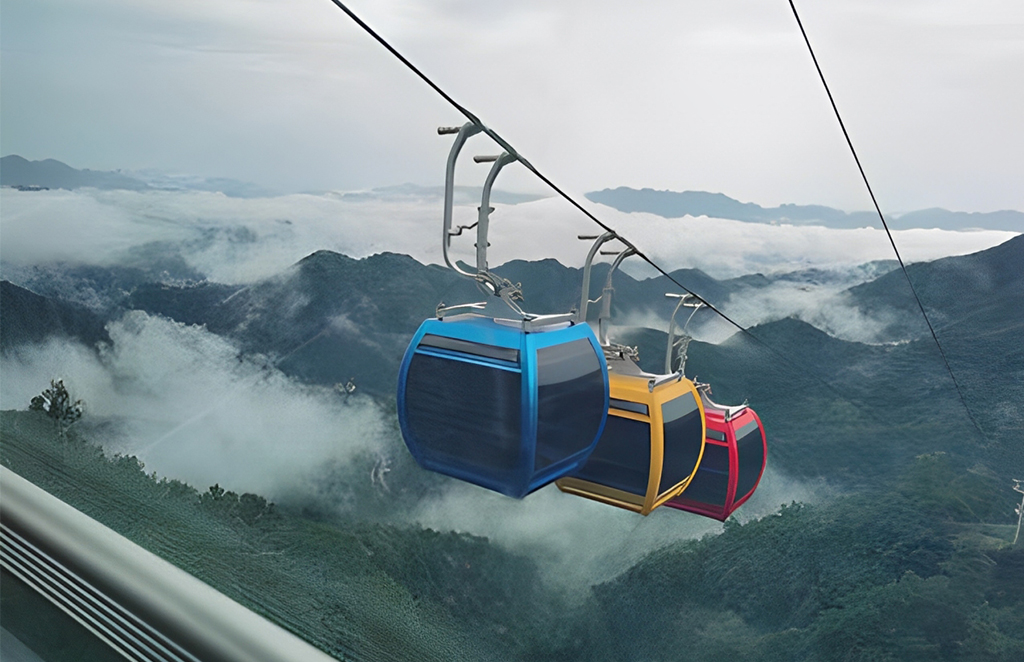Pulsating aerial cableway

The characteristic of the pulsating overhead cableway is the periodic variation of the operating speed of the line. The two ends of the cableway station are configured as the driving end and the winding end. The suspension boxes are distributed in groups of 4, 6, 8, etc. The common configuration of group boxes is 3 boxes/group and 4 boxes/group. The cableway operation mode is that the suspension box runs at high speed on the line after leaving the station, with a speed of up to 5 meters/second. After entering the station, the suspension box runs at low speed, which can reach 0.3 meters/second. Passengers getting on and off the station are relatively safe Full, children’s handcarts, wheelchairs, and winter sports equipment can be easily carried, making them a better choice for the elderly and children to travel. The speed of the pulsating cableway route is fast, and the overall running time of the cableway route is relatively short. Cableway hanging boxes are commonly equipped with 6-person or 8-person hanging boxes, and the hanging boxes are equipped with automatic opening and closing doors. There is no need for on-site staff to manually open and close the doors when lifting boxes in and out of the station. The overall configuration of the pulsating cableway line has a large span of line supports, ensuring smooth operation of the cableway and suitable for the vast majority of terrains. The pulsating cableway line suspension boxes are grouped and concentrated for easy rescue of cableway faults. This type of cableway is environmentally friendly, pollution-free, and causes less damage to vegetation during construction. The cableway has fewer hanging boxes along the entire route and can operate normally in seven level winds, rain, and fog weather. It is a safe, reliable, economical, and practical mountain transportation and sightseeing facility.
